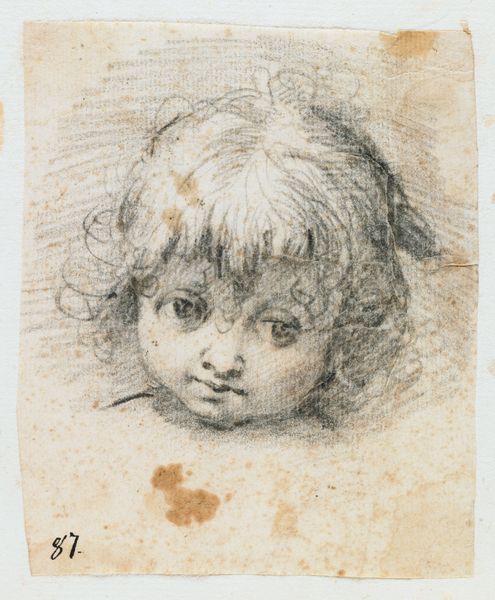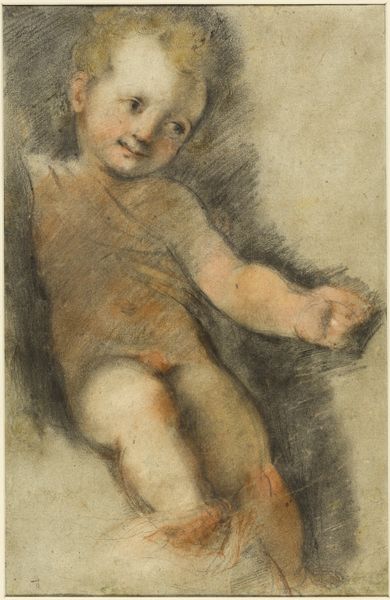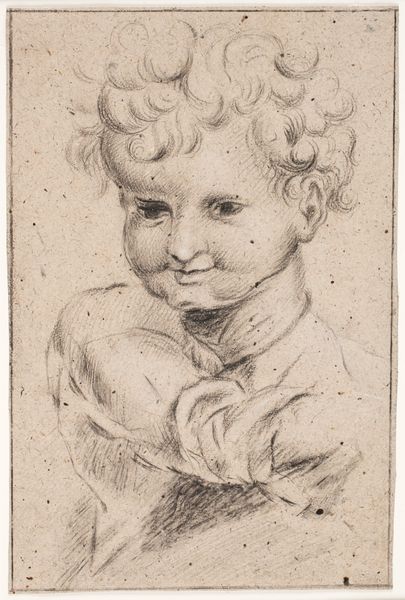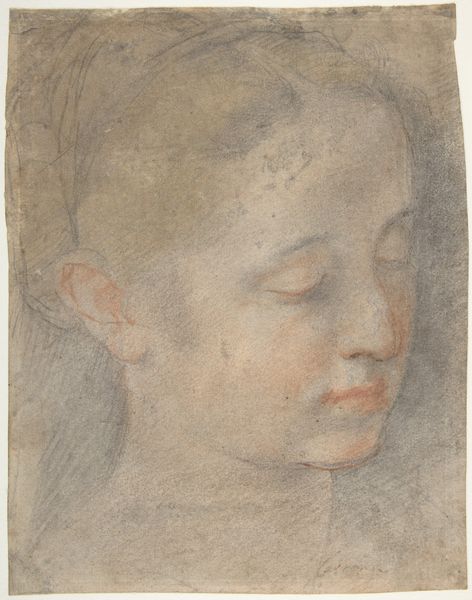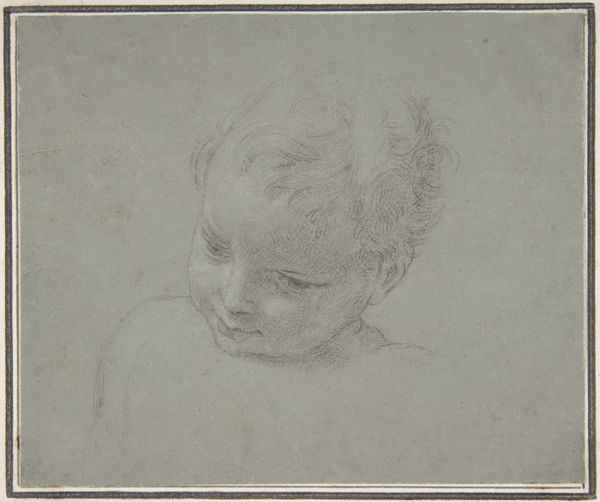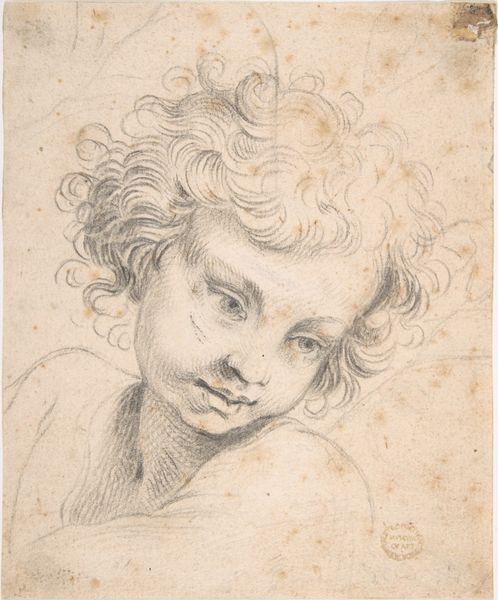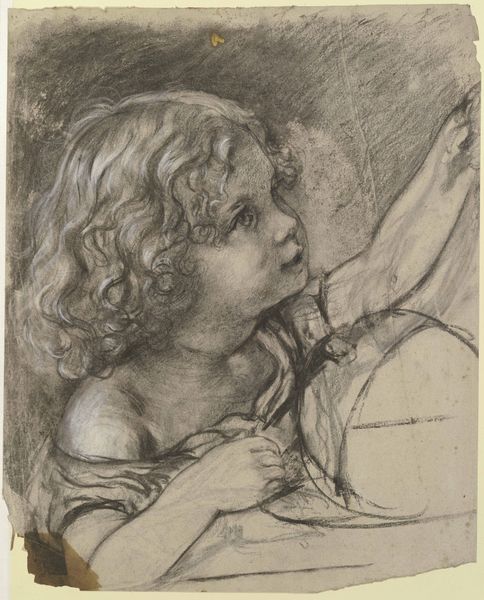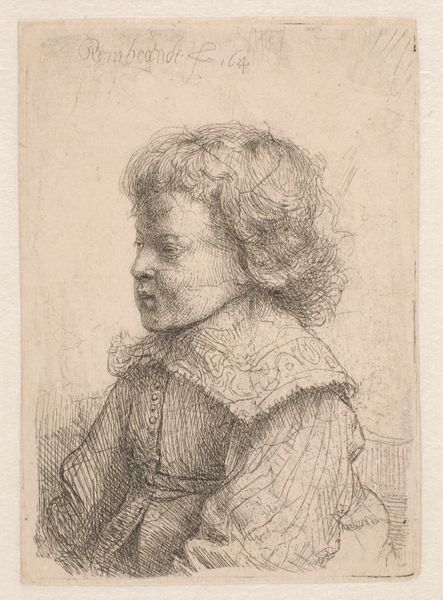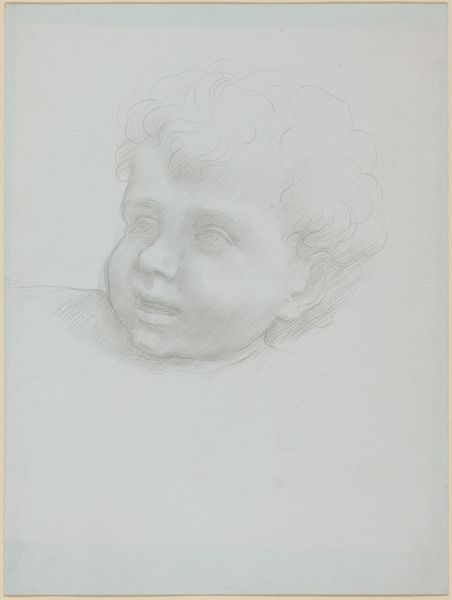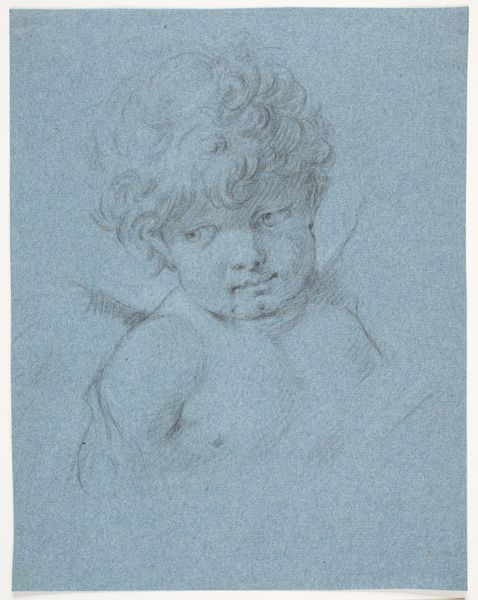
Child's Head (Recto) Nude Male Figure (Verso) n.d.
0:00
0:00
drawing, paper, chalk, charcoal
#
portrait
#
drawing
#
high-renaissance
#
charcoal drawing
#
paper
#
chalk
#
portrait drawing
#
charcoal
#
italian-renaissance
#
italy
Dimensions: 316 × 234 mm
Copyright: Public Domain
Antonio da Correggio created this drawing of a child's head in black chalk, likely in the first decades of the 16th century. The work speaks to shifting cultural values in Renaissance Italy. Correggio was working in a time when artists increasingly drew inspiration from classical antiquity. The rediscovery of ancient Greek and Roman art and literature led to new ideas about beauty, proportion, and the human form. Artists began to study anatomy more closely, and to depict the human body in a more naturalistic way. The child's head here embodies some of that naturalism, but idealizes it through its roundness and softness. Drawings like this one also played an important role in the workshop practices of artists. They allowed artists to study and refine their ideas before committing them to paint. Archival evidence, like letters between artists and patrons, can reveal the complex social and economic conditions that shaped artistic production during this period. Ultimately, it demonstrates how Renaissance artists were both influenced by and helped to shape the culture in which they lived.
Comments
No comments
Be the first to comment and join the conversation on the ultimate creative platform.
